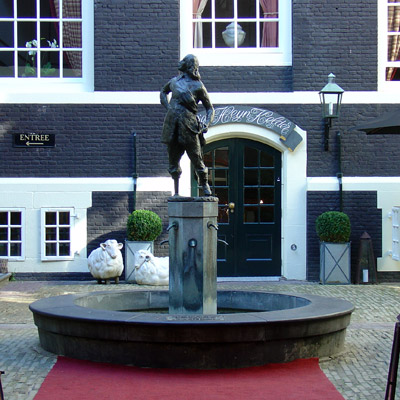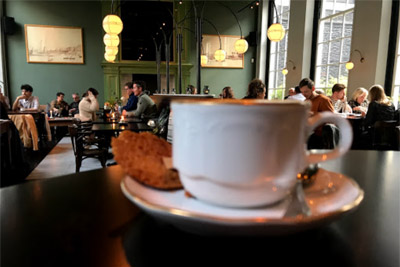In this building, the Dutch WIC's governors in 1625 ordered the construction of a fort on the island of Manhattan, laying the foundations for New York City.
In this building, the Dutch WIC's governors in 1625 ordered the construction of a fort on the island of Manhattan, laying the foundations for New York City.

The West India House and courtyard with a statue of Peter Stuyvesant
In 1609 Henry Hudson, an Englishman working for a Dutch company, discovered the island of Manhattan. The Dutch decided to set up a colony there, and named it Nieuw Amsterdam (New Amsterdam, now New York).
The company that ran the colony, the Dutch West India Company (WIC), had its headquarters in Amsterdam. You can see that building, the West India House, at the point where the Herengracht meets the Brouwersgracht (behind the children's playground).
In its courtyard is a statue of the first commander of New Amsterdam, Peter Stuyvesant*.
The basement of the building also had an important function, accommodating the Zilvervloot (silver fleet), conquered by Piet Hein in 1628 and worth approximately 11 to 15 million guilders.
The New Netherlands area, which included New Amsterdam, covered parts of present-day New York, Connecticut, Delaware, and New Jersey.
Other settlements were established on the Netherlands Antilles, several other Caribbean islands, Suriname and Guyana.
* Stuyvesant (1592-1672) was Governor of the colony of Nieuw Amsterdam, later to be New York, from 1646-64.
Herenmarkt 99
Amsterdam (Canal Belt)

directions_bus 18 21 22 48 Buiten Brouwersstraat
local_parking P1 Amsterdam centraal
official website
www.hetwestindischhuis.nl

former headquarters of the Dutch East India Company (VOC)
more impressions

